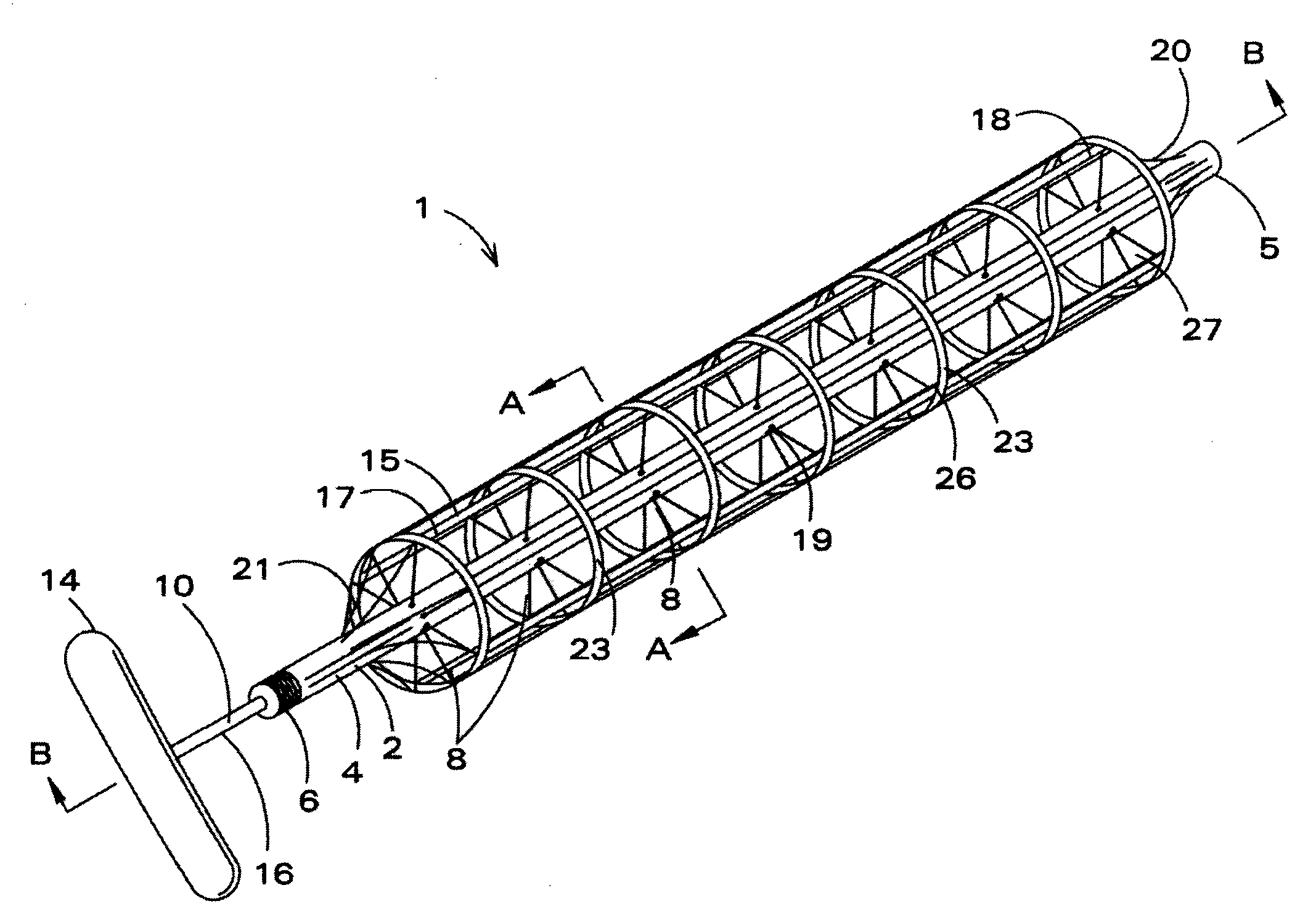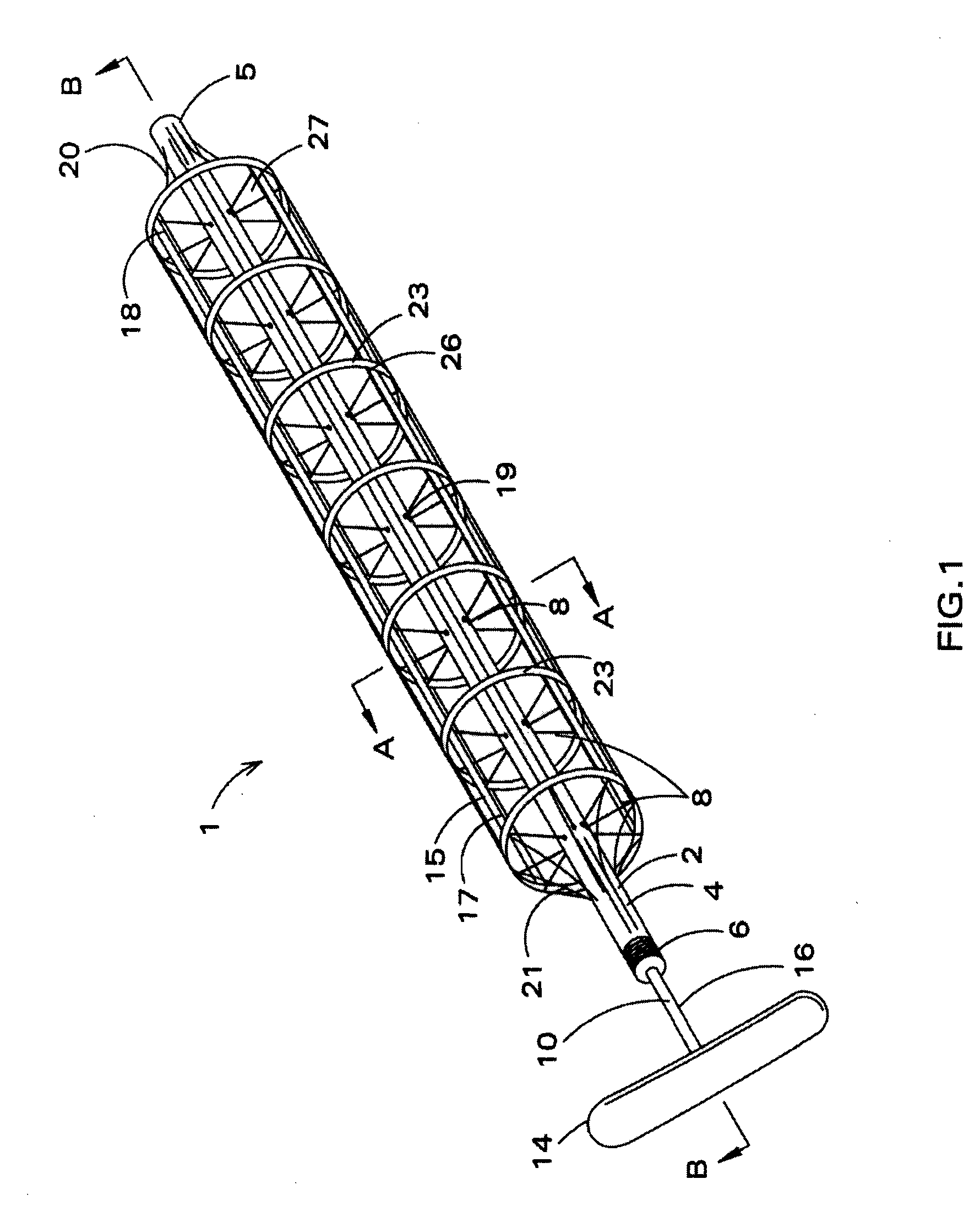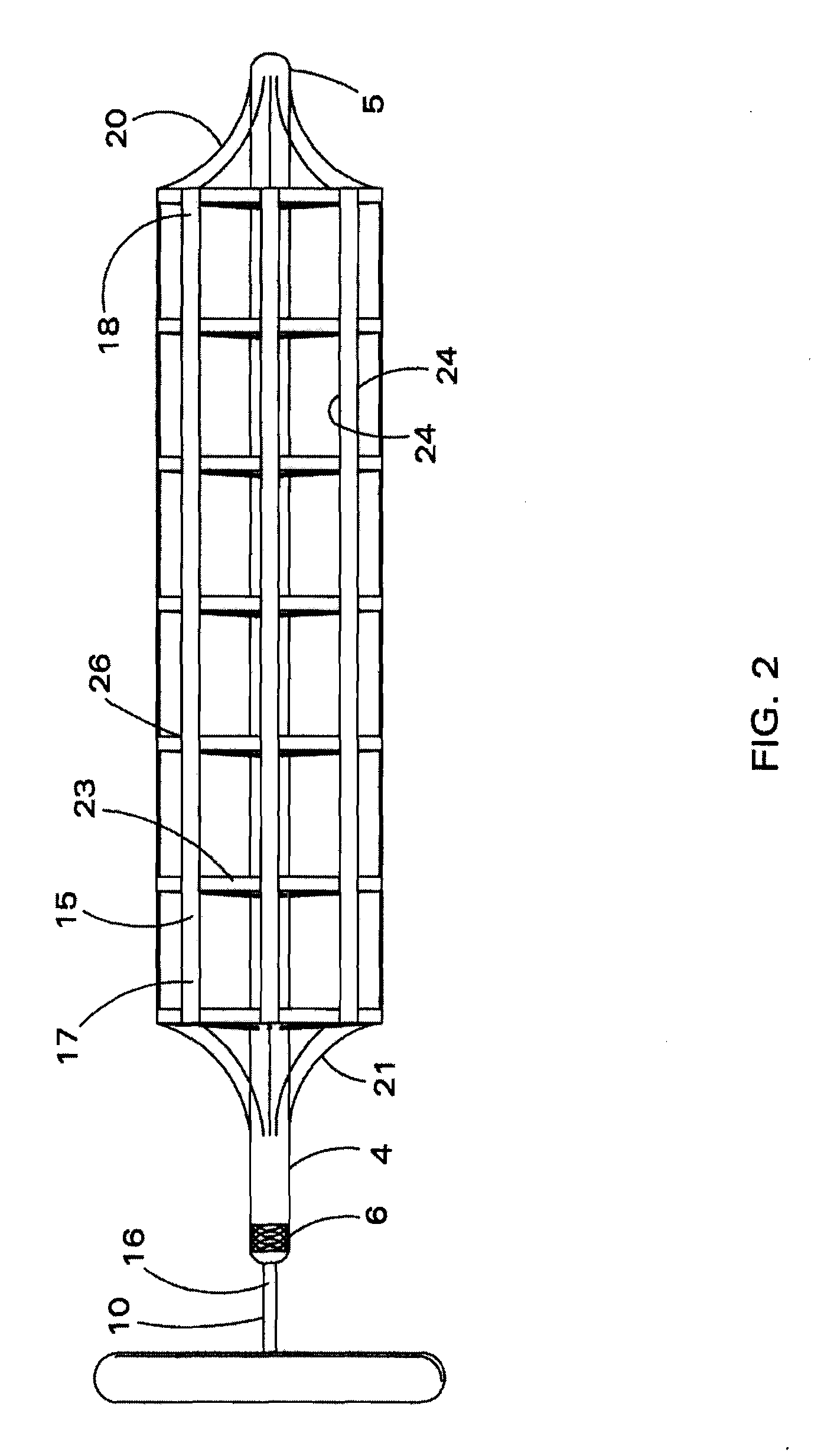Mechanically deployable upper airway stent
a stent and upper airway technology, applied in the field of pharyngeal obstruction, can solve the problems of obstructive sleep apnea patients who receive sedation, analgesia or anesthesia for diagnostic or therapeutic procedures, increased risk of perioperative complications, and drop in blood oxygen level, so as to enhance positioning and removal of the stent. , the effect of preventing the collapse of pharyngeal tissues
- Summary
- Abstract
- Description
- Claims
- Application Information
AI Technical Summary
Benefits of technology
Problems solved by technology
Method used
Image
Examples
Embodiment Construction
[0030]The present invention relates to a mechanically deployable pharyngeal stent and method of using same. In its un-deployed state, the stent has a reduced diametric profile and is insertable into the nasal passageway via one of the nares. Once fully inserted and positioned, the stent is deployed. Deploying the stent causes radially movable spokes bearing perimeter ribs to move outwardly from the stent such that the ribs and their optional adjoining web members press against the tissues of the pharyngeal cavity that define the patient airway. The pressing force from the stent restricts tissue swelling, incursion or motility and therefore prevents the structures of the nasopharynx or oropharynx from collapsing or intruding into the airway. Inter-spoke spaces allow the flow of air along the length of the stent and result in airway patency.
[0031]For purposes of description herein, the term “proximal” shall refer to that portion of the stent or component thereof that is situated close...
PUM
 Login to View More
Login to View More Abstract
Description
Claims
Application Information
 Login to View More
Login to View More - R&D
- Intellectual Property
- Life Sciences
- Materials
- Tech Scout
- Unparalleled Data Quality
- Higher Quality Content
- 60% Fewer Hallucinations
Browse by: Latest US Patents, China's latest patents, Technical Efficacy Thesaurus, Application Domain, Technology Topic, Popular Technical Reports.
© 2025 PatSnap. All rights reserved.Legal|Privacy policy|Modern Slavery Act Transparency Statement|Sitemap|About US| Contact US: help@patsnap.com



